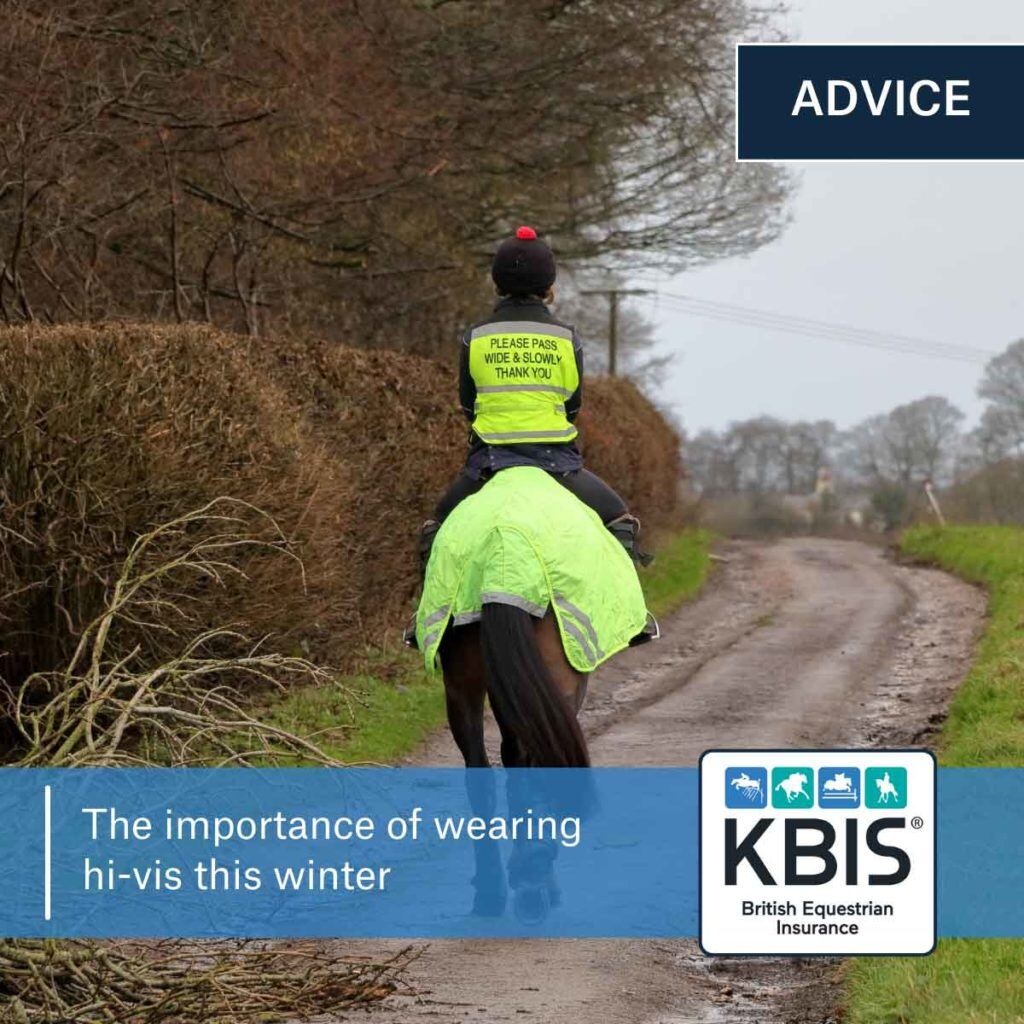High-visibility (or hi-vis) gear should be an essential part of any rider’s and horse owner’s kit – no matter the time of year. It enhances the visibility of both horse and rider on and off roads, including on bridleways and in fields, preventing potentially dangerous situations from occurring as you are seen sooner.
In the winter months, there is a greater chance that some (or perhaps even all) of the time you have to spend at the yard is in the dark or lower light conditions at least. With less daylight available, you may find yourself hacking out in lower-light conditions or having to turn out/bring in your horse in these conditions and may have a road or lane to navigate when doing so. To ensure that motorists and other road users have enough time to see and react to your presence on the road, you and your horse must be wearing these essential pieces of safety kit.
So, with winter firmly upon us, it’s essential to start thinking hi-vis.
What is hi-vis?
Hi-vis apparel increases visibility by reflecting different light sources. It can help to avoid accidents from occurring, by making those wearing it significantly more visible to other road users.
Most commonly, you will find the kit in fluorescent yellow, green, orange, and red. We respond to these colours most quickly because they are the most visible to the human eye.
How does hi-vis clothing work?
There are two main components to hi-vis clothing: fluorescent material and retro-reflective bands (or tape). Knowing how each material works will help you to make an informed decision when making your purchase.
Fluorescent materials work by absorbing ultraviolet light and re-emitting it at a different wavelength. It is this process that makes the garment ‘glow’ and sets it apart from its natural surroundings. This piece of safety kit is excellent in low light conditions such as dusk or dawn. However, it does not offer the same level of protection at night.
For night-time safety, you will need to make sure you have retro-reflective bands. These bands offer extra protection by reflecting light directly back to its source. For example, car headlights will be reflected straight back to the driver, giving them more time to react to your presence.
Whilst there is no requirement to wear hi-vis from an insurance point of view, KBIS recommends that you wear a coat or tabard with both components when on roads in any light conditions. It will provide you with improved visibility and may even help with your insurance claim if you are involved in an accident.
Benefits of hi-vis while off-roading
It is also recommended that both horse and rider wear hi-vis clothing when hacking off-road. Although it wouldn’t be the main reason for putting on your hi-vis before heading out if you were unfortunate enough to have an accident whilst riding, you would be more visible to search parties. This is a particular benefit in the winter months when sub-zero temperatures can potentially be life-threatening.
What products and why?
There are no legal requirements for horse riders to wear hi-vis clothing, but it’s definitely in the rider’s best interest to do so.
The advice from the BHS is, as a minimum, riders should wear a hi-vis jacket or tabard and the horse should have hi-vis leg bands.
When deciding on what colour to purchase, consider the types of background in which you will be riding. Typically, yellow is the most popular choice for horse riders based on research that this colour reflects light that the human eye is most sensitive to. Something to keep in mind when making your choice.
Another important purchase before heading out on the roads, no matter the time of year, is Public Liability insurance. You can add this to your Horse insurance policy from as little as £20 a year or take out a policy on its own for less than £50 per year. This gives you complete peace of mind that the policy will protect you in the event that you are held legally liable for third party property damage or bodily injury.


